|
|
|
Книги издательства «Cambridge University Press»

|
Second edition of this popular course for young learners — now seven levels including Starter. Perfect preparation for Cambridge English Young Learners: Flyers Well-loved by children and teachers the world over, Kid's Box is bursting with bright ideas to inspire you and your pupils. Perfect for general use, the course also fully covers the syllabus of the Cambridge Young Learners English (YLE) tests, preparing your students for success at Starters, Movers and Flyers. This Language Portfolio fully complies to CEF guidelines, and allows students to monitor their own progress. |
|
Well-loved by children and teachers the world over, Kid's Box is bursting with bright ideas to inspire you and your pupils. Perfect for general use, the course also fully covers the syllabus of the Cambridge Young Learners English (YLE) tests, preparing your students better than ever for success at Starters, Movers and Flyers. The new edition offers enhanced digital support including a new Presentation Plus with interactive whiteboard tools, interactive Pupil's and Activity Books, extra teacher's resources and online teacher training. The online platform includes games and extra activities for every unit, and all the students' online work can be tracked and reviewed by the teacher. |
|
Well-loved by children and teachers the world over, Kid's Box is bursting with bright ideas to inspire you and your pupils. Perfect for general use, the course also fully covers the syllabus of the Cambridge Young Learners English (YLE) tests, preparing your students better than ever for success at Starters, Movers and Flyers. The new edition offers enhanced digital support including a new Presentation Plus with interactive whiteboard tools, interactive Pupil's and Activity Books, extra teacher's resources and online teacher training. The online platform includes games and extra activities for every unit, and all the students' online work can be tracked and reviewed by the teacher. |
|
Second edition of this popular course for young learners — now seven levels including Starter. Perfect preparation for Cambridge English Young Learners: Flyers with Level 6. Well-loved by children and teachers the world over, Kid's Box Second edition is bursting with bright ideas to inspire you and your pupils. Perfect for general use, the course also fully covers the syllabus of the Cambridge Young Learners English (YLE) tests, preparing your students for success at Starters, Movers and Flyers.This Language Portfolio 6 fully complies to CEFR guidelines, and allows students to monitor their own progress. |
|
The world's best-selling grammar series for learners of English. Essential Grammar in Use is a self-study reference and practice book for elementary-level learners (A1-B1), used by millions of people around the world. With clear examples, easy-to-follow exercises and answer key, the Fourth edition is perfect for independent study, covering all the areas of grammar that you will need at this level. The book has an easy-to-use format of two-page units with clear explanations of grammar points on the left-hand page, and practice exercises on the right. It also includes plenty of additional exercises and a Study Guide to help you find the grammar units you need to study. |
|
Contains four complete tests for the First Certificate exam from Cambridge ESOL. These past examination papers provide the most authentic exam preparation available, allowing candidates to familiarise themselves with the content of the exam and to practise exam techniques. Colour visual material for Paper 5 is included with each test. The Student's Book is also available as a 'with answers' edition, suitable for self study. |

|
Clear Speech from the Start gives beginning students immediate help in mastering the crucial elements of English pronunciation. The Student's Book concentrates on features that will have the most significant impact on a student's ability to understand and communicate with others such as stress, rhythm and intonation. It also focuses on speech sounds that carry specific grammatical meaning, such as the plural “s” and the past tense “ed” ending. The text presents these features through kinesthetic exercises and visual and auditory modeling, thus making them accessible even to beginners. |
|
Interchange is a three-level course for learners of English as a foreign language. Written in American English, Interchange reflects the fact that English is a language of international communication. The multi-skills syllabus on which the course is based integrates structural, functional, lexical, phonological, situational and thematic syllabuses, while the methodology emphasises a communicative approach, focusing on both accuracy and fluency. Interchange is attractively designed to appeal to adult and young adult learners who want a course that provides them with extensive opportunities to express their own ideas and opinions, while developing the skills they need to communicate effectively in English. Key Features of the Course are: — Snapshots' contain interesting real-world information to stimulate thought and discussion related to the themes of the units — Conversations present structures and functions in a situational context and serve as language models for speaking tasks — Word Power' exercises present and practice key language used in each unit — Pair work, group work, and role-play activities provide freer and more personalised practice of the language — All four skills are developed through discrete exercises and within integrated activities — Special tasks called Interchange activities' provide a communicative extension to each unit, allowing learners to use the language they have acquired in creative ways — Review units after every three units review and recycle material — Tests accompanying the review units are in the teacher's book and are photocopiable — Interchange was field-tested widely in many countries before publication Level 1 takes learners from false-beginner to low-intermediate level, presenting and practising basic language items with opportunities for personalisation right from the start. Level 2 extends and develops language from Level 1, through a range of motivating material, taking learners up to the intermediate level. For intermediate learners and above, Level 3 further extends the grammatical, functional and lexical skills of learners, with challenging contemporary readings and recordings. |

|
Interchange is a multi-level course for adult and young adult learners of English from beginning to high-intermediate level. Designed for low-intermediate learners, Level Two covers a range of contemporary topics using an approach that integrates the teaching of grammar and meaningful communicative practice. Written in American English, Interchange reflects the fact that English is a language of international communication, not limited to any one country, region, or culture. The multi-skills syllabus on which the course is based integrates structural, functional, lexical, phonological, situational, and thematic syllabi. The methodology reflects a communicative approach, with an emphasis on both fluency and accuracy. |

|
This is part of a course specifically designed for pre-intermediate learners, allowing those who come from a broad range of previous learning situations to enter at this level and make progress, without presupposing knowledge from another coursebook. |
|
In recent years governments and scientific establishments have been encouraging the development of professional and popular science communication. This book critically examines the origin of this drive to improve communication, and discusses why simply improving scientists' communication skills and understanding of their audiences may not be enough. Written in an engaging style, and avoiding specialist jargon, this book provides an insight into science's place in society by looking at science communication in three contexts: the professional patterns of communication among scientists, popular communication to the public, and science in literature and drama. This three-part framework shows how historical and cultural factors operate in today's complex communication landscape, and should be actively considered when designing and evaluating science communication. Ideal for students and practitioners in science, engineering and medicine, this book provides a better understanding of the culture, sociology and mechanics of professional and popular communication. |
|
Writing scientific papers and giving talks at meetings and conferences are essential parts of research scientists' work, and this short, straightforwardly written book will help workers in all scientific disciplines to present their results effectively. The first chapter is about writing a scientific paper and is a revision of a prize-winning essay. Later chapters discuss the preparation of typescripts, speaking at meetings and writing theses. There are also chapters addressed particularly to those scientists to whom English is a foreign language and to those in North America. The last chapter gives information about dictionaries, style books and other literature. The book draws on the author's wealth of experience in presenting his own work and in editing the work of others, and he draws his examples from a range of subjects. |
|
Customary international law, although long recognized as a primary source of international law, remains replete with enigmas, both conceptual and practical. These include how to determine the existence of opinio juris, the function of the state practice requirement, the definition of jus cogens customary norms, and the relationship between customary international law and ethics. In part because of these enigmas, the subject has generated a wide-ranging literature. However, no recent book-length work has attempted to articulate a comprehensive theory of customary international law that can effectively resolve these questions. This book sets out to accomplish this goal. Its approach is unique in a number of ways. For example, it is multidisciplinary and draws insights from fields such as legal theory, philosophy, political science, and game theory. In addition, it is anchored in a sophisticated ethical framework and explores at length the interconnections between customary international law and ethics. |
|
Written by a team based at one of the world's leading centres for linguistic teaching and research, the second edition of this highly successful textbook offers a unified approach to language, viewed from a range of perspectives essential for students' understanding of the subject. Using clear explanations throughout, the book is divided into three main sections: sounds, words, and sentences. In each, the foundational concepts are introduced, along with their application to the fields of child language acquisition, psycholinguistics, language disorders, and sociolinguistics, giving the book a unique yet simple structure that helps students to engage with the subject more easily than other textbooks on the market. This edition includes a completely new section on sentence use, including an introduction and discussion of core areas of pragmatics and conversational analysis; new coverage of sociolinguistic topics, introducing communities of practice; a wealth of new exercise material and updated further reading. |
|
This is the most up-to-date and accessible guide to one of the fastest growing areas in financial analysis by two of the most accomplished young econometricians in Europe. This classroom-tested advanced undergraduate and graduate textbook provides an in-depth treatment of recently developed nonlinear models, including regime-switching and artificial neural networks, and applies them to describing and forecasting financial asset returns and volatility. It uses a wide range of financial data, drawn from sources including the markets of Tokyo, London and Frankfurt. |
|
The book addresses issues in the field of teaching academic writing to non-native speakers. The paperback edition provides a series of discussions about multiple aspects of second language writing, presenting chapters that collectively address a range of issues that are important to new teachers at the post-secondary level. The 13 chapters provide scholarly visions, insight, and interpretation, oriented toward explaining the field of teaching academic writing to non-native speakers. The book is designed to provide foundational content-knowledge in this area, with each chapter authored by recognized experts in the field. Throughout the chapters, presentation and review of scholarship is presented primarily in the interest of understanding how such knowledge directly or potentially imparts teaching, making this a pedagogically relevant book. In addition to helping train new teachers, the book will serve as an updated reference book for practicing teachers and scholars to consult. |
|
How to provide appropriate feedback to students on their writing has long been an area of central significance to teachers and educators. Feedback in Second Language Writing: Context and Issues provides scholarly articles on the topic by leading researchers, who explore topics such as the socio-cultural assumptions that participants bring to the writing class; feedback delivery and negotiation systems; and the role of student and teacher identity in negotiating feedback and expectations. This text provides empirical data and an up-to-date analysis of the complex issues involved in offering appropriate feedback during the writing process. |
|
This volume combines diverse research scenarios to present a solid framework for analysis of figurative language. Figurative Language, Genre and Register brings together discourse analysis and corpus linguistics in a cutting-edge study of figurative language in spoken and written discourse. The authors explore a diverse range of communities from chronic pain sufferers to nursery staff to present a detailed framework for the analysis of figurative language. The reader is shown how figurative language is used between members of these communities to construct their own 'world view', and how this can change with a shift in perspective. Figurative language is shown to be pervasive and inescapable, but it is also suggested that it varies significantly across genres. |

|
Explains and illustrates how teachers can use corpora to create classroom materials and activities to address specific class needs. Using Corpora in the Language Classroom shows teachers how to use corpora and corpus tools to expand student learning. Together with its companion website, this teacher-friendly book demystifies corpus linguistics with clear explanations, instructions and examples. It provides the essential knowledge, tools, and skills teachers need to enable students to discover how language is really used. Clear and concise, this volume provides: — An overview of corpus linguistics; — Clear explanations of terminology; — Tasks and activities that invite readers to interact with the material; — Principled instructions for creating classroom materials and activities, including how to create corpora to address specific class needs. |
|
The Cambridge Checkpoint English suite provides a comprehensive, structured resource which covers the Secondary 1 framework for English and seamlessly progresses into the next key stage (covered by our Cambridge IGCSE(r) First Language English series). This lively stage 8 Coursebook contains 12 themed units providing comprehensive coverage of the revised Cambridge Secondary 1 syllabus. As the core component in this suite, this title includes coverage of the five content areas (Phonics, Spelling and Vocabulary, Grammar and Punctuation, Reading, Writing, and Speaking and Listening). Additional features include rigorous language practice and teaching of key concepts, engaging activities to develop reading and writing skills, integrated speaking and listening tasks and a wide range of fiction and non-fiction texts from around the world. A skill-building, write-in workbook and a Teacher's Resource CD-ROM are available separately. |
|